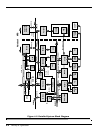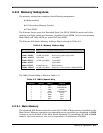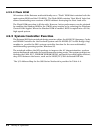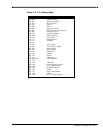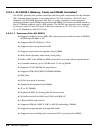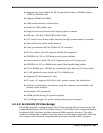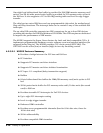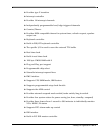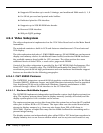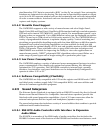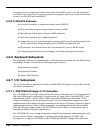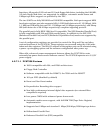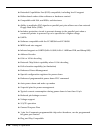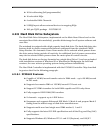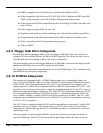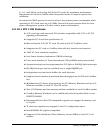
4-12 Theory of Operation
♦ Supports PIO modes up to mode 5 timings, and multiword DMA mode 0, 1, 2
♦ 8 x 32-bit pre-read and posted-write buffers
♦ Dedicated pins for ATA interface
♦ Supports up to 256 KB ROM size decode
♦ Reserved USB interface
♦ 208-pin PQFP package
4.2.4 Video Subsystem
The video subsystem is implemented on the VGA Video Board and on the Main Board
Assemblies.
The notebook contains a built-in LCD and features simultaneous LCD and external
VGA display.
The video subsystem includes a 1.5 MB DRAM memory, 32-bit DRAM bus, and separate
display and memory clocks. An additional frame buffer/accelerator DRAM increases
the available memory band width for CPU accesses. The video section also uses
additional levels of write FIFOs, a read cache, page mode DRAM.
Control of the video subsystem is provided by the C&T 65550 High Performance Flat
Panel/CRT VGA Controller chip. The C&T65550 multimedia flat panel/CRT GUI
accelerators provide 64-bit high performance and new hardware multimedia support
features as described in the following paragraphs.
4.2.4.1 C&T 65550 Features
The C&T65550 integrates a powerful 64-bit graphics accelerator engine for Bit Block
Transfer (BitBLT), hardware cursor, and other functions intensively used in graphical
User Interfaces (GUls) such as Microsoft Windows. Superior performance is also
achieved through a direct 32-bit interface to the PCI Local Bus.
4.2.4.1.1 Hardware MultiMedia Support
The C&T65550 implements independent multimedia capture (and display systems) on-
chip. The capture system places data in display memory (usually off screen) and the
display system places it in a window on the screen.
The capture system can receive data from either the system bus or from the ZV enabled
video port in either RGB or YUV format. The input data can also scaled down before
storage in display memory (e.g., from any size larger than 320 x 240 down to
352 x 248). Capture of input data may also be double-buffered for smoothing and to
prevent image tearing.
The display system can independently place either RGB or YUV data from anywhere in
display memory into an on-screen window which can be any size and located at any



